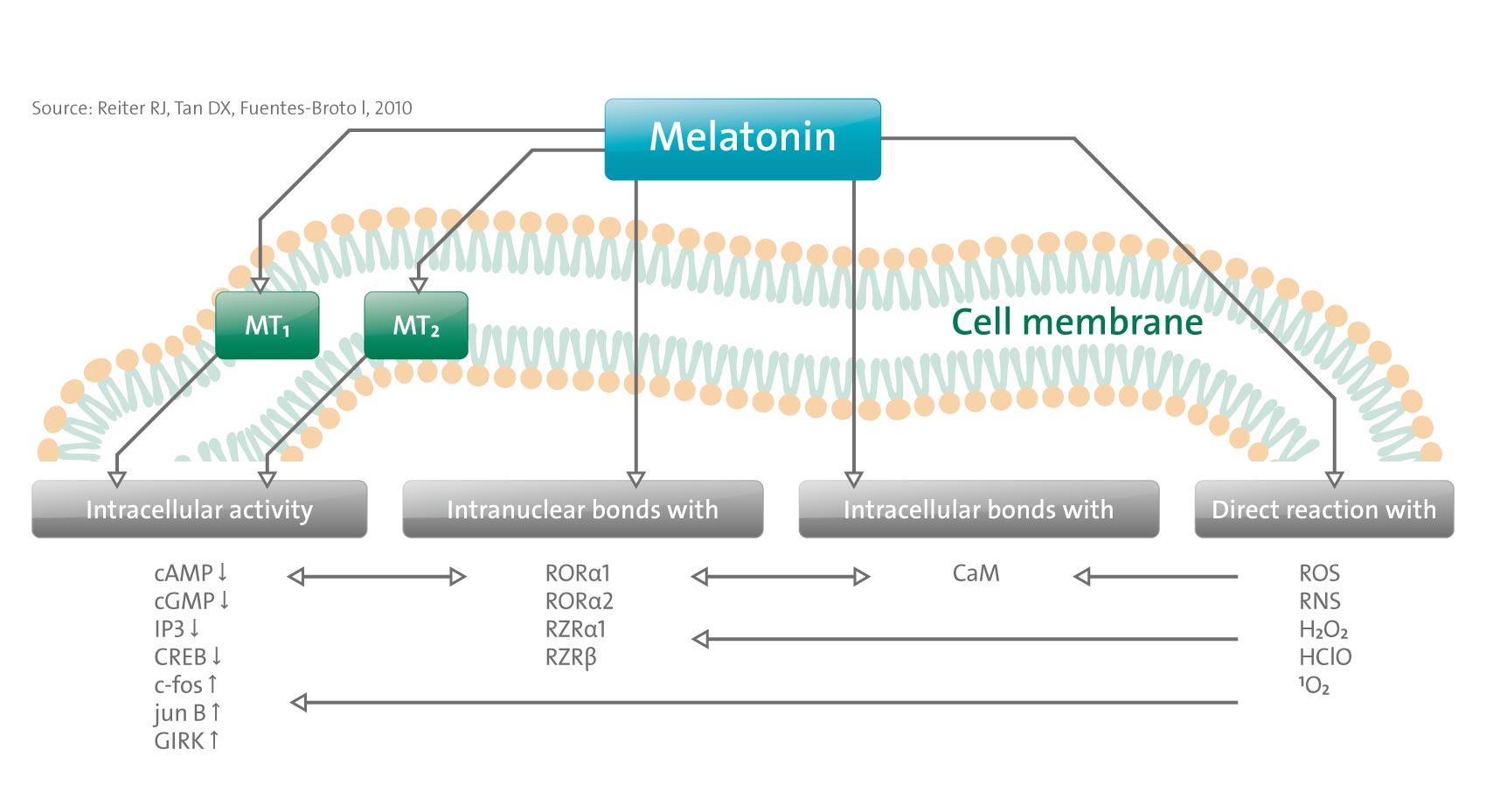Melatonin (N-acetyl-5-methoxytryptamine) has revealed itself as an ubiquitously distributed and functionally diverse molecule. The mechanisms that control its synthesis within the pineal gland have been well characterized and the retinal and biological clock processes that modulate the circadian production of melatonin in the pineal gland are rapidly being unravelled.
A feature that characterizes melatonin is the variety of mechanisms it employs to modulate the physiology and molecular biology of cells. While many of these actions are mediated by well-characterized, G-protein coupled melatonin receptors in cellular membranes, other actions of the indole seem to involve its interaction with orphan nuclear receptors and with molecules, for example calmodulin, in the cytosol. Additionally, by virtue of its ability to detoxify free radicals and related oxygen derivatives, melatonin influences the molecular physiology of cells via receptor-independent means. These uncommonly complex processes often make it difficult to determine specifically how melatonin functions to exert its obvious actions. What is apparent, however, is that the actions of melatonin contribute to improved cellular and organismal physiology. In view of this and its virtual absence of toxicity, melatonin may well find applications in both human and veterinary medicine.
